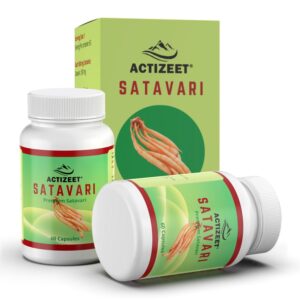When it comes to the vast world of medicinal herbs, Gymnema Sylvestre stands tall as a true powerhouse. Also known as “Gurmar” in Hindi, which translates to “sugar destroyer,” this herb has been revered for centuries for its potential therapeutic benefits. Originating from the tropical forests of India and parts of Africa, Gymnema Sylvestre for diabetes has captured the attention of researchers and health enthusiasts alike due to its alleged ability to support diabetes management.
In Ayurvedic medicine, an ancient Indian healing system dating back thousands of years, the use of Gymnema Sylvestre is deeply rooted. Ayurvedic practitioners have long recognized its remarkable properties and harnessed them for various ailments.
Traditionally, it has been employed as a remedy for respiratory disorders, digestive issues, and even snake bites! However, its most renowned application lies in managing blood sugar levels—an area where it truly shines.
The historical significance of Gymnema Sylvestre is not limited to Ayurveda alone; it has also been mentioned in ancient texts such as the Charaka Samhita and Sushruta Samhita. These texts detail the intricate knowledge passed down through generations about the plant’s therapeutic uses.
It was believed that consuming Gymnema Sylvestre leaves could suppress sweet tastes, which led to investigating its potential impact on diabetes—a connection that still intrigues scientists today. With such a rich history steeped in ancient healing traditions and countless anecdotes supporting its efficacy over generations, there is no denying that Gymnema Sylvestre has earned its place as an herbal superstar.
But does modern scientific research align with these age-old beliefs? Let us delve deeper into this remarkable herb’s powers and explore how it may hold the key to managing diabetes and improving overall health.
Table of Contents
ToggleUnderstanding Diabetes
The Complexities of Diabetes
Diabetes, my friend, is no simple fish to catch. It’s a crafty, chronic metabolic disorder that throws many a person off balance. But fear not, for knowledge is the key to understanding this formidable foe.
Allow me to shed some light on the matter. At its core, diabetes messes with the body’s ability to regulate glucose levels effectively.
You see, glucose is like fuel for our cells—it powers them up and keeps them humming along happily. But in diabetes, this delicate balance goes haywire.
The body either doesn’t produce enough insulin (a hormone that helps transport glucose into cells) or can’t use it properly. This results in elevated blood sugar levels that can wreak havoc on various organs and systems over time.
Type 1 vs. Type 2: A Tale of Two Diabetes
Ah, my good reader! Now I must unveil the two contrasting characters in our diabetes saga: Type 1 and Type 2 diabetes—akin to night and day, yin and yang!
Let us explore their unique traits. Type 1 diabetes strikes when the immune system decides to go rogue and starts attacking those mighty beta cells in the pancreas responsible for producing insulin with fierce determination.
Without sufficient insulin production, glucose cannot enter cells efficiently—creating a bit of chaos within the body’s intricate machinery. On the other hand, Type 2 diabetes often sneaks up stealthily over time like a cunning thief in the night.
It occurs when our body develops resistance to insulin or fails to produce enough of it altogether. Factors such as genetics, lifestyle choices (oh yes my friend—diet and exercise matter!), and even some environmental elements all play a role here.
Remember this: while both types share high blood sugar as their common enemy, they differ significantly in their origins, progression, and treatment strategies. So now, armed with a basic understanding of diabetes and its two main types, we can plunge deeper into the world of Gymnema Sylvestre—the natural warrior against this relentless condition.
Gymnema Sylvestre’s Role in Diabetes Management
Gymnema Sylvestre’s Potential Benefits for Diabetes Patients
When it comes to managing diabetes, Gymnema Sylvestre has emerged as a promising natural remedy. This herb, native to the tropical forests of India and Sri Lanka, has been used for centuries in Ayurvedic medicine to help regulate blood sugar levels. It is believed that Gymnema Sylvestre may offer various benefits for individuals living with diabetes.
First and foremost, this remarkable herb is thought to have hypoglycemic properties. Gymnema Sylvestre contains active compounds called gymnemic acids that have been found to mimic the action of insulin, the hormone responsible for regulating blood sugar levels.
By stimulating insulin secretion and enhancing its effectiveness, Gymnema Sylvestre can help lower blood glucose levels in individuals with diabetes. Furthermore, Gymnema Sylvestre has shown potential in reducing sweet cravings.
The gymnemic acids present in the herb interact with taste receptors on our tongues, diminishing our ability to perceive sweetness. This can be particularly beneficial for those struggling with sugar cravings, making it easier to stick to a healthy diet plan aimed at controlling blood sugar levels.
How Gymnema Sylvestre Aids in Lowering Blood Sugar Levels
The mechanism by which Gymnema Sylvestre helps lower blood sugar levels is fascinating and worth exploring further. One key way it accomplishes this is by inhibiting glucose absorption in the intestines.
The gymnemic acids block certain enzymes responsible for breaking down carbohydrates into glucose molecules during digestion. As a result, less glucose is absorbed into the bloodstream after meals.
Additionally, Gymnema Sylvestre may enhance insulin production by regenerating pancreatic beta cells—the cells responsible for producing insulin in the body. This regeneration process can help boost the overall capacity of the pancreas to produce and release insulin, thereby improving blood sugar control.
It is important to note that while Gymnema Sylvestre has shown promising results in lowering blood sugar levels, it should not be used as a substitute for prescribed medications or medical advice. As with any natural supplement or treatment, it is advisable to consult with a healthcare professional before incorporating it into your diabetes management plan.
Active Compounds in Gymnema Sylvestre
Detailed exploration of gymnemic acids found in the herb
Gymnema Sylvestre, also known as the “sugar destroyer,” contains a group of active compounds called gymnemic acids. These unique substances are primarily responsible for Gymnema’s remarkable effects on diabetes management. Gymnemic acids have been extensively studied and are believed to have potent anti-diabetic properties.
One particular gymnemic acid, known as gymnemic acid I, has received significant attention due to its ability to suppress the taste of sweetness. When you consume Gymnema Sylvestre, these gymnemic acids bind to the sweet receptors on your taste buds, temporarily blocking them from sensing sweetness.
As a result, your cravings for sweet foods and beverages are reduced or even eliminated altogether. This valuable characteristic makes Gymnema Sylvestre an invaluable aid for individuals who struggle with sugar addiction or find it challenging to maintain a balanced diet while managing diabetes.
How gymnemic acids interact with taste receptors on the tongue, reducing sweet cravings
The interaction between gymnemic acids and taste receptors occurs due to their structural similarity to glucose molecules. When you consume Gymnema Sylvestre or its extracts, these compounds enter your oral cavity and bind to the receptor sites that would normally recognize sugars. This binding process prevents sugar molecules from attaching themselves to those receptors, resulting in a temporary numbing of your ability to perceive sweetness.
Additionally, this interaction triggers physiological changes in your body that reduce cravings for sugary foods and beverages over time. By interrupting the signal pathway associated with sweetness perception on your tongue, Gymnema helps recalibrate your taste preferences towards more natural flavors rather than relying heavily on excessive sweetness.
Discussion on their potential role in glucose absorption inhibition
Aside from its impact on taste perception, Gymnema Sylvestre’s gymnemic acids may also contribute to inhibiting glucose absorption in the body. These compounds are believed to play a crucial role in reducing the absorption of sugars from the intestine into the bloodstream, thus preventing sharp spikes in blood sugar levels. Research suggests that gymnemic acids may hinder glucose transporters responsible for carrying sugars across the intestinal wall and into circulation.
By impeding this process, Gymnema Sylvestre may help regulate blood glucose levels and prevent sudden rises, making it an appealing option for those seeking natural alternatives to manage diabetes. It’s important to note that while Gymnema Sylvestre and its active compounds show promising potential in diabetes management, consulting with a healthcare professional is essential before incorporating it into your treatment plan.
Scientific Evidence and Research Studies
Scientific studies supporting the use of Gymnema Sylvestre for diabetes management
Numerous scientific studies have been conducted to explore the potential benefits of Gymnema Sylvestre in managing diabetes. These studies have shed light on its effectiveness in controlling blood sugar levels and improving overall glycemic control.
One study published in the Journal of Ethnopharmacology examined the impact of Gymnema Sylvestre supplementation on individuals with type 2 diabetes. The participants were divided into two groups, with one group receiving Gymnema Sylvestre extract while the other received a placebo.
The study found that those who took Gymnema Sylvestre showed significant reductions in fasting blood glucose levels and HbA1c, a long-term marker of blood sugar control. Another notable study conducted at a research institute in India investigated the effects of Gymnema Sylvestre on diabetic individuals who were already taking conventional anti-diabetic medication.
The participants were given either a Gymnema Sylvestre supplement or a placebo alongside their regular treatment for six months. The results indicated that those taking Gymnema Sylvestre experienced additional improvements in glycemic control compared to the placebo group, as evidenced by reduced fasting blood glucose levels and improved insulin sensitivity.
How these studies were conducted and their outcomes
The studies mentioned above utilized randomized controlled trials (RCTs), which are considered gold-standard research designs for establishing causality between interventions and outcomes. In both cases, researchers carefully selected participants with type 2 diabetes and monitored them over specific durations to gauge the effects of Gymnema Sylvestre supplementation.
The outcomes consistently demonstrated positive impacts on glycemic control markers such as fasting blood glucose levels, postprandial glucose spikes, insulin resistance, and HbA1c. These outcomes suggest that Gymnema Sylvestre may play a significant role in managing diabetes and complementing conventional treatments.
Limitations or conflicting results
While the scientific evidence supporting the use of Gymnema Sylvestre for diabetes management is promising, there are still some limitations and conflicting results that should be acknowledged. Firstly, some studies have shown variations in outcomes, possibly due to differences in participant characteristics, dosage protocols, or measurement methods. Additionally, most studies have primarily focused on type 2 diabetes, leaving room for further investigation into the herb’s effectiveness for type 1 diabetes.
It is important to note that individual responses to Gymnema Sylvestre can vary. Some people may experience significant improvements in blood sugar control while others may see more modest effects.
Furthermore, it is essential to consult with a healthcare professional before incorporating Gymnema Sylvestre into your diabetes management routine, especially if you are already taking prescription medications or have any underlying health conditions. Overall, while scientific studies provide valuable insights into the potential benefits of Gymnema Sylvestre for diabetes management, further research is needed to establish its efficacy across different populations and explore potential long-term effects.
Other Potential Health Benefits of Gymnema Sylvestre
Weight Loss Support
Gymnema Sylvestre, the ancient herb known for its remarkable effects on diabetes management, may also play a role in supporting weight loss efforts. Many individuals struggling with their weight often find themselves fighting against intense sugar cravings that sabotage their progress.
This is where Gymnema Sylvestre steps in as a potential ally. The active compounds found in Gymnema Sylvestre, particularly the gymnemic acids, have been suggested to help curb sugar cravings by interacting with taste receptors on the tongue.
These gymnemic acids can temporarily block the ability to taste sweetness, thus reducing the desire for sugary foods and drinks. By suppressing sweet cravings, Gymnema Sylvestre may indirectly aid weight loss efforts by promoting healthier food choices and reducing overall caloric intake.
Additionally, some research suggests that Gymnema Sylvestre may have a positive impact on metabolism and fat absorption. It is believed that certain compounds in this herb can help regulate insulin levels and promote better utilization of glucose by cells.
By improving insulin sensitivity, Gymnema Sylvestre potentially assists in converting carbohydrates into energy rather than storing them as fat deposits. Although further studies are needed to fully understand its mechanism of action for weight loss support, incorporating this herb into a well-balanced diet and exercise plan could be worth considering.
Cholesterol Regulation
Beyond its potential benefits for diabetes and weight management, Gymnema Sylvestre has also been explored for its possible role in regulating cholesterol levels. High cholesterol is a common concern associated with an increased risk of cardiovascular diseases such as heart attacks or strokes. While more research is needed to establish concrete conclusions about Gymnema Sylvestre’s impact on lipid profiles, preliminary studies suggest promising results.
Some studies conducted on animal models have indicated that Gymnema Sylvestre extracts may help reduce total cholesterol and triglyceride levels, while simultaneously increasing high-density lipoprotein (HDL) cholesterol, commonly known as the “good” cholesterol. These effects could potentially contribute to a healthier lipid profile by lowering the risk of plaque formation in blood vessels.
It is important to note that while Gymnema Sylvestre shows potential for supporting weight loss and cholesterol regulation, it should not be used as a substitute for medical advice or prescribed medications. Always consult with a healthcare professional before incorporating any new supplement or herbal remedy into your health routine, particularly if you have pre-existing medical conditions or are taking medication that may interact with this herb.
Methods of Consumption and Dosage Recommendations
Explore the Variety: Capsules, Tea, and Extracts
When it comes to consuming Gymnema Sylvestre, there are several options available depending on your preference and convenience. One popular method is through capsules or tablets, which provide a convenient way to incorporate Gymnema Sylvestre into your daily routine.
These capsules typically contain powdered Gymnema Sylvestre leaves or extracts, making it easy to measure and control your dosage accurately. It is essential to follow the instructions provided by the manufacturer or consult a healthcare professional for recommended dosages.
Another delightful way to enjoy the benefits of Gymnema Sylvestre is by brewing a cup of Gymnema tea. This method involves steeping dried leaves or tea bags in hot water for a few minutes before sipping the flavorsome brew.
Not only does it offer potential health benefits, but it also provides a relaxing ritual that can be incorporated into your daily wellness routine. For those who prefer more concentrated doses, liquid extracts of Gymnema Sylvestre are available in the market.
These extracts are made by extracting active compounds from the herb using solvents like alcohol or water. They offer a highly potent form of consumption but may require careful consideration of dosage due to their concentrated nature.
Navigating Dosage: General Guidelines for Safe Consumption
Determining an appropriate dosage for Gymnema Sylvestre can vary based on individual factors such as age, overall health status, and severity of diabetes symptoms. It is always recommended to consult with a healthcare professional before starting any new herbal supplement.
As a general guideline, when consuming powdered capsules or tablets, an average adult may start with 400-600 mg per day spread over two or three doses. However, this can be adjusted based on individual responses and the advice of a healthcare provider.
For Gymnema tea, steeping 1-2 teaspoons of dried leaves in a cup of hot water for 5-10 minutes is typically recommended. However, it is crucial to note that the dose and steeping time can be adjusted based on personal preference and desired effects.
When opting for liquid extracts, it is essential to follow the instructions provided by the manufacturer or consult with a healthcare professional for appropriate dosage recommendations. The concentrated nature of extracts necessitates careful consideration to avoid exceeding safe limits.
Remember, these guidelines serve as a starting point, and personalized dosage adjustments should always be made under professional guidance. It’s crucial to monitor your blood sugar levels regularly when incorporating Gymnema Sylvestre into your diabetes management routine to ensure optimum efficacy and safety.
So, whether you prefer capsules, invigorating teas, or potent extracts, there are various methods available to incorporate Gymnema Sylvestre into your diabetes management regimen. With proper understanding and guidance regarding dosage recommendations, you can harness the potential benefits of this remarkable herb while ensuring safe consumption.
Precautions and Side Effects
Potential Interactions with Medications or Existing Health Conditions
While Gymnema Sylvestre is generally considered safe, it’s important to be aware of potential interactions with medications or existing health conditions. If you are currently taking medications for diabetes, such as insulin or oral hypoglycemic agents, it is crucial to consult with your healthcare provider before incorporating Gymnema Sylvestre into your regimen. The herb may enhance the effects of these medications, leading to low blood sugar levels (hypoglycemia).
Consequently, careful monitoring and potential adjustments of your medication dosage may be necessary. In addition, individuals with certain health conditions should exercise caution when using Gymnema Sylvestre.
Those who have liver or kidney diseases should consult their healthcare provider before starting any herbal supplement. Furthermore, pregnant or breastfeeding women are advised to avoid Gymnema Sylvestre due to limited research on its safety during these stages.
Possible Side Effects
Gymnema Sylvestre is generally well-tolerated; however, some individuals may experience minor side effects. These can include mild gastrointestinal discomfort such as nausea, indigestion, or an upset stomach. Such reactions are rare and usually temporary.
It is important to note that while Gymnema Sylvestre helps regulate blood sugar levels in individuals with diabetes, it should not replace prescribed medication without proper medical guidance. Always discuss any concerns or potential side effects with your healthcare provider before starting a new supplement.
Conclusion
Gymnema Sylvestre shows promise as a natural remedy in managing diabetes due to its potential blood sugar-lowering properties. However, it’s essential to approach its use cautiously and responsibly.
Before incorporating Gymnema Sylvestre into your diabetes management plan, consult with your healthcare provider to ensure it is safe and suitable for you. Remember, while Gymnema Sylvestre can be a helpful addition to a healthy lifestyle, it is not a magic cure-all.
It should be used as a complementary aid alongside conventional treatments and lifestyle modifications like regular exercise and a balanced diet. By working collaboratively with your healthcare provider, you can make informed decisions about incorporating Gymnema Sylvestre into your diabetes management routine, potentially enhancing your overall well-being.
Related Products
-
Himalayan Shilajit, Pure shilajit, Shilajit, SHUDDH SURYA TAPI SHILAJIT
Rated 4.74 out of 5₹4,950.00Original price was: ₹4,950.00.₹3,950.00Current price is: ₹3,950.00. Incl. GST ADD TO CART Buy Now -
Rated 4.86 out of 5
₹2,400.00Original price was: ₹2,400.00.₹1,600.00Current price is: ₹1,600.00. Incl. GST ADD TO CART Buy Now -
Rated 4.82 out of 5
₹2,400.00Original price was: ₹2,400.00.₹1,600.00Current price is: ₹1,600.00. Incl. GST ADD TO CART Buy Now -
Rated 4.84 out of 5
₹2,400.00Original price was: ₹2,400.00.₹1,600.00Current price is: ₹1,600.00. Incl. GST ADD TO CART Buy Now
-
Rated 4.00 out of 5
₹2,400.00Original price was: ₹2,400.00.₹1,600.00Current price is: ₹1,600.00. Incl. GST ADD TO CART Buy Now -
Rated 4.80 out of 5
₹2,400.00Original price was: ₹2,400.00.₹1,600.00Current price is: ₹1,600.00. Incl. GST ADD TO CART Buy Now -
Rated 4.71 out of 5
₹2,400.00Original price was: ₹2,400.00.₹1,600.00Current price is: ₹1,600.00. Incl. GST ADD TO CART Buy Now -
Rated 0 out of 5
₹2,400.00Original price was: ₹2,400.00.₹1,600.00Current price is: ₹1,600.00. Incl. GST ADD TO CART Buy Now
POPULAR PRODUCT CATEGORIES
Related posts:
- Safed Musli: A Natural Supplement For Diabetes Management
- Harnessing the Power of Amla Powder for Diabetes Management: A Natural Approach
- Syzgium Cumini For Diabetes – Natural Way To Combat Diabetes
- Moringa Powder: A Natural Remedy for Diabetes?
- Emblica Officinalis: A Natural Remedy for Diabetes
- Tribulus Terrestris: A Natural Remedy for Diabetes
- Berberidaceae for Diabetes: Natural Remedy Revealed
- Diabetes-Control Blood Sugar Naturally


















